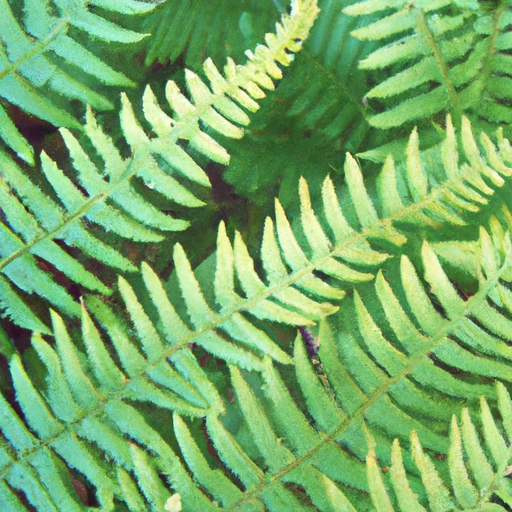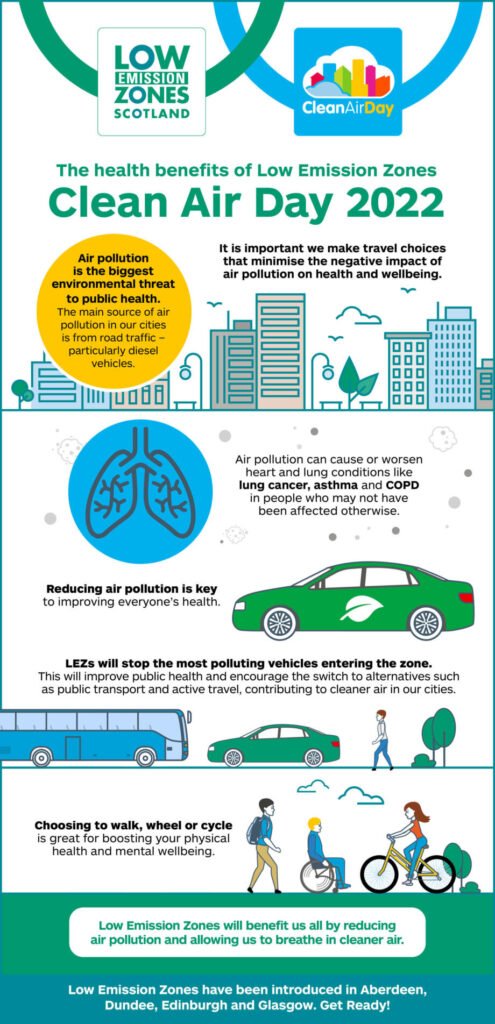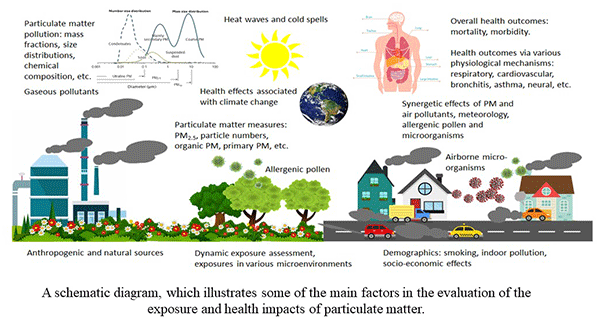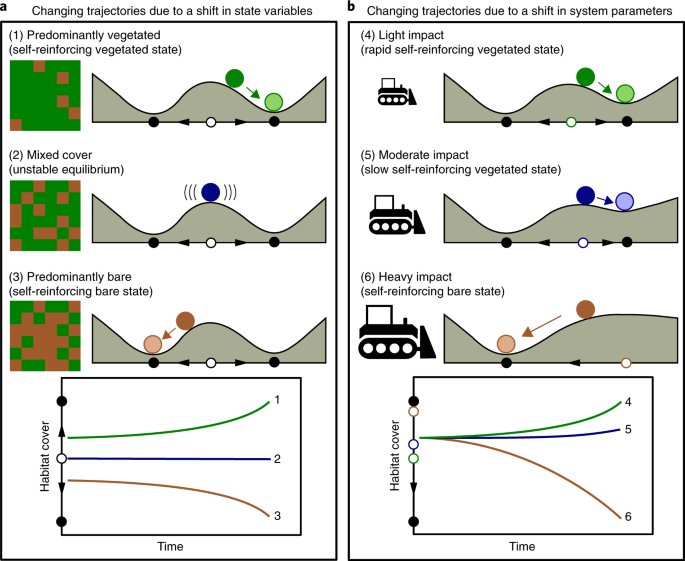Imagine stepping out into your backyard, surrounded by lush greenery and beautiful flowers, as your furry friend happily explores the pet-friendly paradise you have created. With our low-maintenance landscaping solutions, you can create a haven for both you and your beloved pets to enjoy. From durable and non-toxic plants to creative play areas, we have all the tips and tricks you need to design a beautiful outdoor space that will bring joy to both you and your four-legged friends. Say goodbye to endless hours of yardwork and hello to a pet-friendly oasis that will make tails wag and hearts sing.
H2: Pet-Friendly Plant Selection
Choosing the right plants for your outdoor space is essential when you have pets. You want to create a beautiful and safe environment for both your furry friends and your plants to coexist. When selecting plants, it’s crucial to opt for non-toxic varieties that won’t harm your pets if they happen to nibble on them. There are numerous non-toxic plant options available that can add color and life to your garden while providing a safe space for your pets to roam.
H3: Non-Toxic Plants for Pets
Here are some popular non-toxic plant options that you can consider for your pet-friendly outdoor space:
-
Spider Plant: Spider plants are known for their air-purifying qualities and are safe for both cats and dogs.
-
Boston Fern: Boston ferns have lush foliage and are non-toxic to pets, making them a great choice for adding greenery to your garden.
-
Bamboo Palm: Bamboo palms not only add a tropical touch to your outdoor space but are also safe for pets.
-
African Violet: African violets are small and colorful flowering plants that are safe for cats and dogs.
Remember to research and confirm the toxicity of any plants you plan to bring into your garden before making a final decision.
H3: Pet-Friendly Grass Varieties
Having a pet-friendly lawn can be beneficial for both your pets and your overall landscaping. Here are a few grass varieties that are known for their durability and resistance to heavy pet traffic:
-
Bermuda Grass: Bermuda grass is a popular choice for pet owners due to its ability to withstand wear and tear. It thrives in warm climates and has good drought resistance.
-
Perennial Ryegrass: Perennial ryegrass is known for its quick germination and rapid growth, making it an excellent choice for repairing damaged areas of your lawn caused by pets.
-
Buffalo Grass: Buffalo grass is a warm-season grass that requires less maintenance and watering. It has a high tolerance for pet urine and excellent recovery capabilities.
When considering grass varieties, it’s important to keep in mind your climate, the amount of shade in your yard, and the specific needs of your pets.
H3: Plants to Avoid with Pets
While there are many pet-friendly plant options available, some plants can be toxic to pets if ingested. It’s crucial to be aware of these plants and avoid including them in your outdoor space. Some common plants to avoid include:
-
Lilies: Many species of lilies can be highly toxic to cats, causing kidney failure if ingested.
-
Azaleas and Rhododendrons: These beautiful flowering plants contain toxins that can be harmful to both cats and dogs.
-
Daffodils: Daffodil bulbs, in particular, are toxic to pets and can cause vomiting, diarrhea, and even cardiac arrhythmias if ingested.
Always conduct thorough research or consult with a veterinarian to ensure that the plants you choose are safe for your pets. It’s better to be cautious and select non-toxic options to protect your furry companions.
H2: Designing Pet-Friendly Outdoor Spaces
Creating a pet-friendly outdoor space goes beyond selecting suitable plants. It involves designing an environment that accommodates the specific needs and behaviors of your pets. Whether you have a dog who loves to run and play or a cat who prefers lounging in the sun, there are various ways to design your outdoor space to meet their individual requirements.
H3: Creating a Dog-Friendly Backyard
If you have a dog, consider incorporating the following design elements into your backyard:
-
Designated Play Area: Create a designated area where your dog can freely run and play without damaging sensitive plants or landscaping features.
-
Shade and Water: Provide shaded areas with water sources to keep your dog cool and hydrated during hot summer days.
-
Dog-Friendly Pathways: Install dog-friendly pathways using materials like gravel or mulch to protect your dog’s paws and prevent muddy tracks.
H3: Cat-Friendly Garden Design Tips
Cats have different preferences and behaviors compared to dogs. Here are some cat-friendly garden design tips to consider:
-
Vertical Spaces: Cats love to climb and explore, so incorporate vertical spaces like cat trees or shelves where they can exercise and observe their surroundings.
-
Hidden Spots: Create hidden spots with dense foliage or shrubs where cats can retreat and feel safe.
-
Catnip and Grass: Grow cat-friendly plants like catnip and cat grass to provide sensory stimulation and entertainment for your feline friend.
H3: Incorporating Pet-Friendly Pathways
Pathways are essential for the overall accessibility and functionality of your outdoor space. When designing pathways, consider the following pet-friendly options:
-
Paw-Friendly Surfaces: Opt for materials like gravel, mulch, or flagstones that won’t get too hot during summer or hurt your pet’s paws.
-
Clear Pathways: Ensure that the pathways are clear of any plants or obstacles that may obstruct your pet’s movement.
-
Lighting: Install proper lighting along pathways to enhance visibility during nighttime walks with your pets.
By incorporating these design elements into your outdoor space, you can create an environment that caters to the specific needs of your pets while ensuring their safety and enjoyment.
H2: Low-Maintenance Landscaping Features
Maintaining a beautiful outdoor space doesn’t have to be labor-intensive. By incorporating low-maintenance landscaping features, you can create a pet-friendly environment while minimizing the time and effort required for upkeep.
H3: Artificial Turf for Easy Maintenance
Artificial turf is an excellent option for pet owners looking for a low-maintenance alternative to natural grass. Some benefits of artificial turf include:
-
Durability: Artificial turf is designed to withstand heavy pet traffic, ensuring that your lawn stays green and lush all year round.
-
No Mowing or Watering: With artificial turf, you can say goodbye to mowing and watering. This saves you time, money, and conserves water resources.
-
Pet-Friendly Materials: Modern artificial turf options are made from pet-friendly materials that won’t harm your pets if they happen to ingest or play on the surface.
H3: Drought-Tolerant Plants
If you live in an area prone to water restrictions or have limited time for watering, incorporating drought-tolerant plants in your outdoor space can help you save water and reduce maintenance requirements. Some drought-tolerant plant options include:
-
Succulents: Succulents store water in their leaves, making them extremely resilient and low-maintenance.
-
Lavender: Lavender is known for its aromatic fragrance and requires minimal watering once established.
-
Yarrow: Yarrow is a hardy perennial that thrives in dry conditions and attracts pollinators to your garden.
H3: Mulching for Weed Control
Mulching is an effective way to suppress weeds while adding aesthetic appeal to your garden. When choosing mulch for a pet-friendly outdoor space, consider the following:
-
Organic Mulch: Opt for organic mulch materials like straw, wood chips, or shredded bark, which are safe for pets.
-
Avoid Cocoa Mulch: Avoid using cocoa bean mulch, as it contains theobromine, which can be toxic to dogs if ingested.
-
Proper Application: Apply mulch at an appropriate depth to prevent pets from digging it up and potentially ingesting large amounts.
By incorporating low-maintenance landscaping features, you can create a beautiful outdoor space that is pet-friendly, sustainable, and requires minimal effort to maintain.
H2: Pet-Safe Fertilizer and Pest Control
Maintaining a healthy and pest-free outdoor space is essential, but it’s crucial to do so without compromising the safety of your pets. By opting for pet-safe fertilizers and using natural pest control methods, you can effectively maintain your garden while keeping your pets safe.
H3: Organic Fertilizers for Pet-Friendly Landscaping
Instead of using synthetic fertilizers, consider using organic alternatives that are safe for your pets. Some pet-safe organic fertilizers include:
-
Compost: Incorporating compost into your garden adds organic matter and nutrients to the soil, promoting healthy plant growth naturally.
-
Fish Emulsion: Fish emulsion is a natural and pet-safe liquid fertilizer derived from fish waste. It provides essential nutrients to plants without harming pets.
-
Alfalfa Meal: Alfalfa meal is an organic fertilizer rich in nitrogen, phosphorus, and potassium. It’s safe for pets and helps promote healthy plant growth.
H3: Natural Pest Control Methods
Controlling pests is necessary to protect your plants, but it’s important to prioritize the safety of your pets. Here are some natural pest control methods that are pet-safe:
-
Beneficial Insects: Introduce beneficial insects like ladybugs or lacewings that feed on garden pests, reducing the need for chemical pesticides.
-
Neem Oil: Neem oil is a natural pesticide derived from the neem tree. Diluted and used as directed, it can effectively control pests without harming pets.
-
Diatomaceous Earth: Diatomaceous earth is a pet-safe powder made from fossilized algae. It can repel and control insects by damaging their outer shells.
H3: Avoiding Harmful Chemicals
When using any chemical products in your garden, it’s essential to read and follow the instructions carefully. Avoid using products that contain harmful chemicals, such as herbicides or insecticides that may be toxic to pets. If the use of any chemical product is unavoidable, ensure that your pets are kept away from treated areas until it’s safe for them to return.
By adopting pet-safe fertilizer and pest control methods, you can maintain a healthy and pest-free outdoor space while providing a safe environment for your pets to roam freely.
H2: Secure Pet Enclosures and Boundaries
Creating secure enclosures and boundaries is vital to ensure the safety of your pets and prevent them from wandering off or getting into potentially dangerous situations. There are various options available to suit different pet needs and outdoor spaces.
H3: Installing Pet-Friendly Fences
Fences are a popular way to create a safe and enclosed outdoor space for pets. When installing a pet-friendly fence, consider the following:
-
Height and Gaps: Ensure that the fence is tall enough to prevent your pets from jumping over and that the gaps are small enough to prevent them from squeezing through.
-
Secure Foundations: Bury the fence at least a few inches into the ground to prevent pets from digging underneath.
-
Avoid Toxic Materials: Avoid using fences made from materials that may be toxic to pets, such as pressure-treated wood or certain synthetic materials.
H3: Creating a Safe Outdoor Cat Enclosure
If you have cats, providing them with a safe outdoor enclosure allows them to enjoy the outdoors while limiting their exposure to potential dangers. Consider the following when creating a cat enclosure:
-
Height and Overhangs: Ensure that the enclosure is tall enough to prevent your cat from jumping out and that it has overhangs or netting to prevent them from climbing over.
-
Environmental Enrichment: Include cat-friendly features like scratching posts, perches, and hiding spots to keep your cat entertained and mentally stimulated.
-
Escape Routes: Create multiple escape routes in case your cat feels threatened or overwhelmed, allowing them to retreat to a safe space.
H3: Invisible Pet Containment Systems
Invisible pet containment systems, also known as electric fences, can be an alternative for pet owners who don’t want to install physical fences. When using invisible containment systems, consider the following:
-
Training and Proper Setup: It’s crucial to follow the manufacturer’s instructions and invest time in training your pet to understand the boundaries and consequences of crossing them.
-
Considerations for Sensitive Pets: Some pets may be more sensitive to the electric stimulation of invisible fences, so it’s important to assess your pet’s temperament and discuss it with a professional if needed.
-
Supervision and Maintenance: Regularly check the system for any malfunctions, and provide proper supervision to ensure your pets remain safe within the designated boundaries.
Creating secure pet enclosures and boundaries gives you peace of mind knowing that your pets can enjoy the outdoors safely while still having the freedom to explore and play.
H2: Water Features and Pet Safety
Water features can add beauty and tranquility to your outdoor space, but it’s important to consider the safety of your pets when incorporating them into your landscaping.
H3: Choosing Pet-Safe Water Features
When selecting water features for a pet-friendly outdoor space, it’s crucial to consider the accessibility and safety for your pets. Here are some pet-safe options:
-
Pond with Sloping Entry: If you have a pond, ensure it has a sloping entry or shallow areas where pets can safely enter and exit the water.
-
Fountains with Enclosures: Consider fountains or water features that have enclosures or low walls, preventing your pets from accidentally falling into the water.
-
Avoid Toxic Plants: Keep in mind that certain aquatic plants, like water lilies, can be toxic to pets if ingested. Choose non-toxic alternatives or ensure they are inaccessible to your pets.
H3: Ensuring Water Quality and Hygiene
Maintaining clean and hygienic water in your outdoor space is essential for the wellbeing of both your pets and your plants. Consider the following tips:
-
Filtration Systems: Install a filtration system to keep the water clean and free from debris that may pose health risks to your pets.
-
Regular Cleaning: Regularly clean water features, such as ponds or birdbaths, to prevent the buildup of harmful bacteria or algae.
-
Water Testing: Periodically test the water quality to ensure it’s safe for your pets. Proper pH levels and the absence of toxins are crucial for their health.
By incorporating pet-safe water features and maintaining their cleanliness, you can create a serene and enjoyable outdoor space for both you and your pets.
H2: Pet-Friendly Garden Maintenance Tips
Maintaining a healthy and tidy outdoor space is important for the wellbeing of your pets. By following some pet-friendly garden maintenance tips, you can ensure that your garden remains a safe and enjoyable environment for your furry friends.
H3: Regular Cleaning and Waste Removal
Regular cleaning and waste removal are essential to maintain a clean and hygienic outdoor space for your pets. Some tips for effective cleaning and waste management include:
-
Prompt Waste Removal: Regularly clean up pet waste to prevent odor, bacteria buildup, and potential health risks.
-
Raking and Sweeping: Regularly rake fallen leaves, branches, and sweep debris to keep the outdoor space clean and prevent potential hazards for your pets.
-
Disinfecting Surfaces: Use pet-safe disinfectants to clean surfaces and outdoor furniture that your pets frequently come into contact with.
H3: Safe Weed Control Methods
Weeds can be unsightly and may pose health risks to your pets if they ingest or come into contact with toxic weeds or the chemicals used to control them. Consider these safe weed control methods:
-
Hand Pulling: Regularly inspect your garden for weeds and hand pull them before they have a chance to spread or produce seeds.
-
Use Organic Weed Control Products: Opt for organic weed control products that are safe for pets and the environment, such as vinegar-based sprays or corn gluten meal.
-
Mulching: Applying mulch around plants and garden beds can help suppress weed growth by blocking sunlight and creating a barrier.
H3: Pet-Safe Lawn Care Practices
Maintaining a healthy lawn is important, but it’s essential to use lawn care practices that are safe for your pets. Here are some pet-safe lawn care tips:
-
Avoid Chemical Pesticides: Minimize or eliminate the use of chemical pesticides on your lawn to prevent potential harm to your pets.
-
Proper Mowing Height: Set your lawnmower to the appropriate height to avoid cutting the grass too short, which can damage its root system and make it more susceptible to weeds.
-
Regular Watering: Provide your lawn with regular deep waterings to encourage deep root growth and make it more resilient to foot traffic.
By following these pet-friendly garden maintenance tips, you can ensure a clean, tidy, and safe outdoor space for your pets to enjoy year-round.
H2: Creating Shaded Areas for Pets
Providing shaded areas in your outdoor space is essential to protect your pets from the heat and harmful effects of excessive sun exposure. Here are some ways to create shaded areas for your furry friends:
H3: Incorporating Trees and Shade Structures
Planting trees strategically in your outdoor space can provide natural shade for your pets. Consider the following when incorporating trees:
-
Choose Shade Trees: Select trees that provide ample shade and have non-toxic foliage. Some options include maple, oak, or birch trees.
-
Planting Location: Position trees in areas where they can provide shade to key locations, such as play areas or resting spots.
-
Consider Canopy Size: Keep in mind the size of a tree’s canopy and how it will grow over time to ensure it provides sufficient shade for your pets.
In addition to trees, you can also incorporate shade structures like pergolas or umbrellas to create additional shaded areas in your outdoor space.
H3: Pet-Friendly Sun Protection
Just like humans, pets can benefit from sun protection measures to stay safe outdoors. Here are some pet-friendly sun protection tips:
-
Pet-Safe Sunscreens: Apply pet-safe sunscreens on areas of your pet’s skin that are susceptible to sunburn, such as the ears, nose, or belly.
-
Protective Clothing: Consider dressing your pets in lightweight and breathable clothing that provides UV protection when they’re exposed to the sun.
-
Limit Sun Exposure: During peak sun hours, try to limit your pet’s exposure to direct sunlight. Schedule walks or playtime during cooler parts of the day.
H3: Creating Cool Spots for Pets to Relax
In addition to shade, creating cool spots for your pets to relax in can help them beat the heat. Consider these cooling options:
-
Elevated Pet Beds: Provide your pets with elevated beds or hammocks that allow airflow and keep them off hot surfaces.
-
Cooling Mats or Pads: Use cooling mats or pads designed specifically for pets, which provide a cool surface for them to lie on during hot weather.
-
Misting Systems or Water Play: Install misting systems or set up small kiddie pools or sprinklers where your pets can cool off and have some water play.
By incorporating shaded areas and implementing sun protection measures, you can ensure your pets remain comfortable, safe, and protected from the summer heat.
H2: Pet-Friendly Outdoor Furniture
Choosing the right outdoor furniture is crucial to create a pet-friendly outdoor space that is both comfortable and durable. Consider the following factors when selecting outdoor furniture for your pets:
H3: Choosing Durable and Easy-to-Clean Materials
When it comes to outdoor furniture, durability is key, especially when you have pets. Opt for materials that can withstand pet claws, paws, and occasional accidents. Some pet-friendly furniture options include:
-
Wrought Iron or Aluminum: Wrought iron or aluminum furniture is sturdy, resistant to outdoor elements, and generally pet-friendly.
-
Resin Wicker: Resin wicker furniture is weather-resistant, lightweight, and provides a comfortable seating option for both you and your pets.
-
Treated Wood: If you prefer the natural look of wood, choose furniture made from treated wood that is resistant to moisture, rot, and insect damage.
H3: Opting for Pet-Friendly Fabrics
Selecting the right fabrics for outdoor cushions and upholstery is important to ensure they can withstand potential pet-related mishaps. Consider the following when choosing pet-friendly fabrics:
-
Outdoor Performance Fabrics: Look for outdoor fabrics specifically designed to resist stains, moisture, and fading caused by sun exposure.
-
Machine-Washable Covers: Opt for furniture with removable and machine-washable cushion covers, which can easily be cleaned in case of accidents.
-
Leather or Leather-Like Materials: Leather or leather-like materials are sturdy, less prone to staining, and can be wiped clean when needed.
H3: Providing Comfortable Pet Beds and Rest Areas
In addition to human seating options, it’s important to provide comfortable spots for your pets to relax and rest. Consider the following:
-
Pet-Sized Beds or Cushions: Provide your pets with their own comfortable beds or cushions that are made from pet-friendly and easy-to-clean materials.
-
Shaded Rest Areas: Create shaded rest areas using pet-friendly pergolas or canopies where your pets can relax away from direct sunlight.
-
Outdoor Pet Houses: Install outdoor pet houses or shelters where your pets can seek refuge during inclement weather or enjoy some privacy.
By choosing durable and easy-to-clean outdoor furniture and providing comfortable resting areas for your pets, you can create a pet-friendly outdoor space where both you and your furry companions can relax and enjoy the outdoors.
H2: Pet-Friendly Play Areas and Toys
Designing safe and engaging play areas for your pets is essential to provide them with opportunities for exercise and mental stimulation. Consider the following when creating pet-friendly play areas:
H3: Designing Safe and Engaging Play Spaces
Designing safe play spaces requires both pet-friendly elements and consideration of potential hazards. Here are some tips:
-
Avoid Toxic Plants or Mulch: Ensure that the play area is free from toxic plants or mulch that could harm your pets if ingested.
-
Secure Loose Items: Remove any loose items that could pose a choking hazard or be potentially dangerous if your pets decide to chew or swallow them.
-
Provide Ample Shade: Create shaded areas within the play spaces to prevent your pets from overheating during playtime.
H3: Selecting Pet-Friendly Outdoor Toys
Choosing toys specifically designed for outdoor play is important to ensure they withstand rough play and outdoor conditions. Consider the following:
-
Durable Chew Toys: Opt for durable chew toys made from pet-safe materials that can withstand vigorous chewing and playing.
-
Water Toys: Incorporate water toys like sprinklers, shallow pools, or floating toys to provide your pets with fun and refreshing play options during hot weather.
-
Interactive Puzzle Toys: Select interactive puzzle toys that stimulate your pets’ minds and keep them entertained even when playing alone in the outdoor space.
H3: Creating an Exercise Circuit for Pets
Designing an exercise circuit within your outdoor space can provide your pets with opportunities for physical exercise and mental stimulation. Consider the following when creating an exercise circuit:
-
Obstacle Course: Set up a simple obstacle course using objects like low hurdles, tunnels, or weave poles to challenge and engage your pets.
-
Running Paths: Create designated running paths or trails for your pets to follow, encouraging them to stay active and burn off energy.
-
Hidden Treats or Toys: Hide treats or toys in specific areas of the exercise circuit to keep your pets motivated and excited during their workout.
By designing safe and engaging play areas, selecting appropriate outdoor toys, and creating an exercise circuit, you can provide your pets with a fun and stimulating outdoor environment that promotes their overall wellbeing.
In conclusion, creating a pet-friendly outdoor space involves careful consideration of plant selection, design elements, low-maintenance features, secure boundaries, pet-safe practices, shaded areas, furniture choices, and play areas. By implementing these tips and strategies, you can ensure that your outdoor space is a safe, enjoyable, and nurturing environment for both you and your beloved pets to share for years to come.





